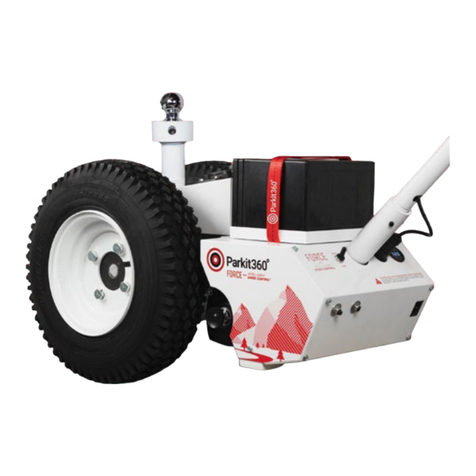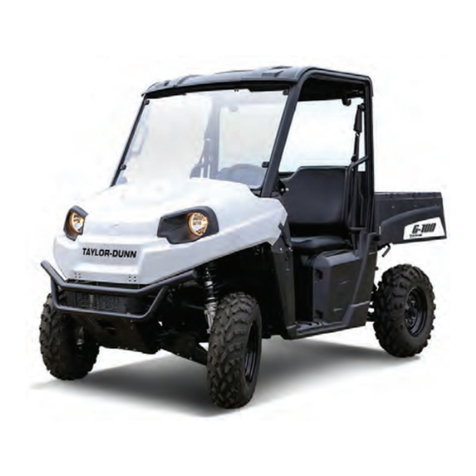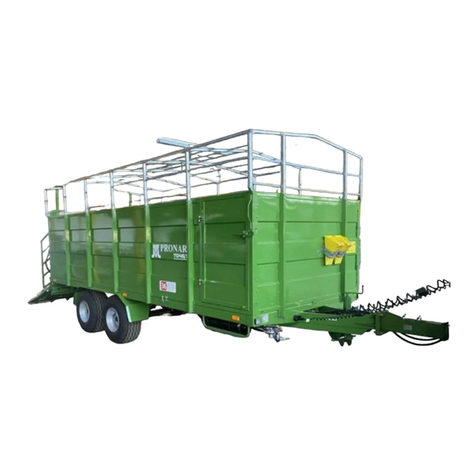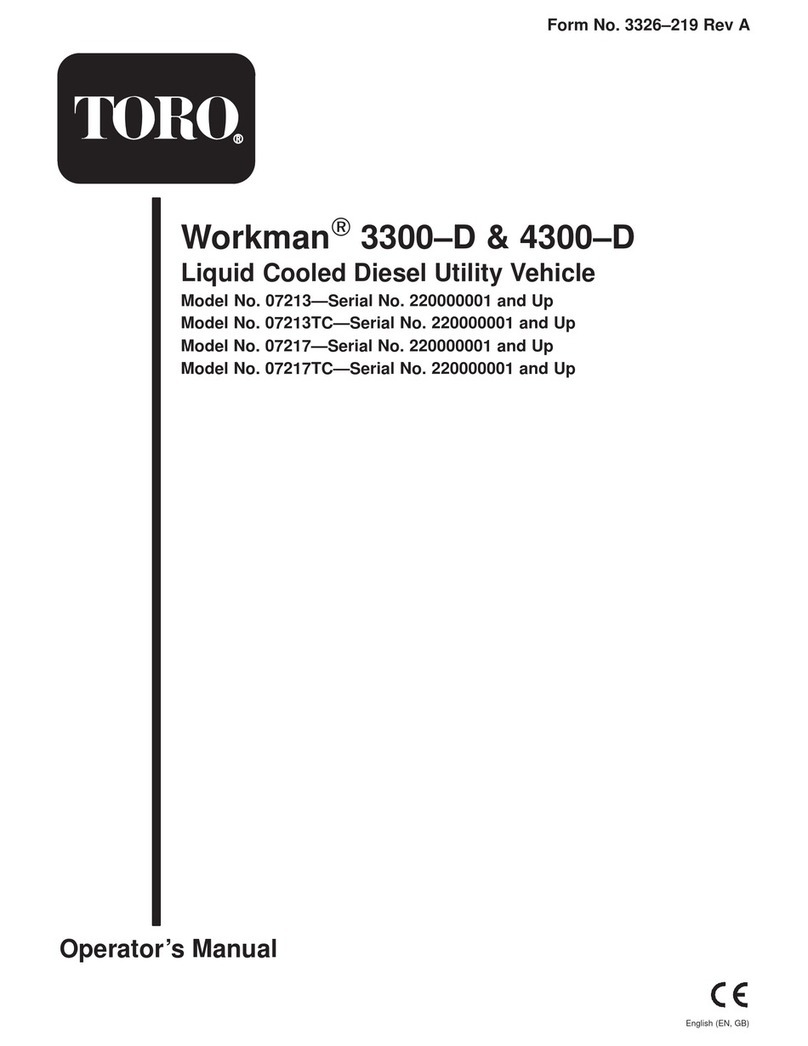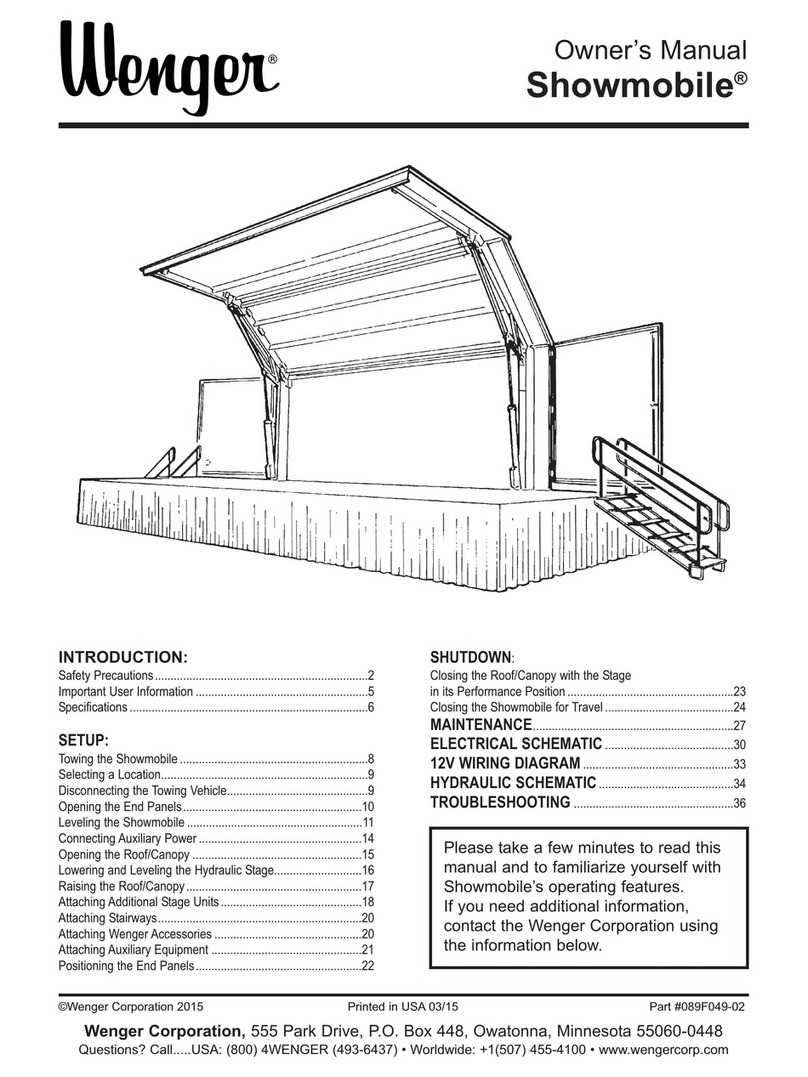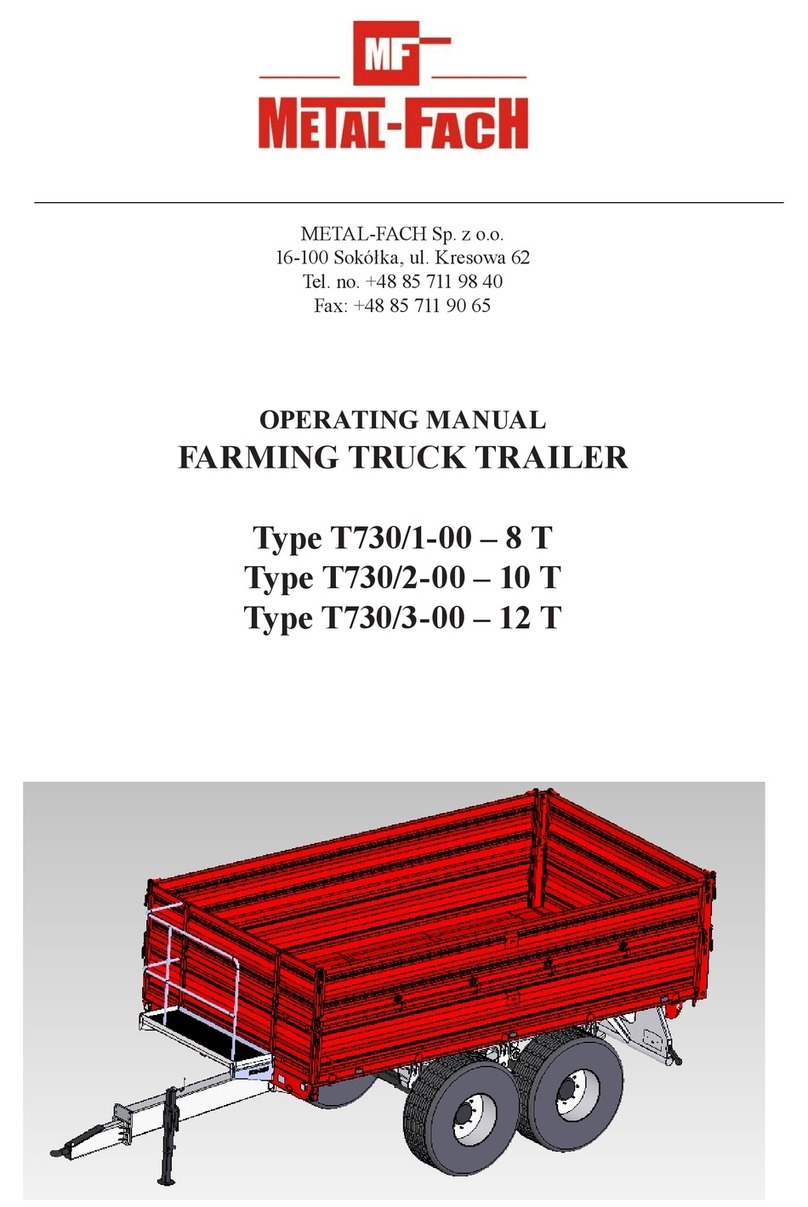TATA Motors LP 613 EURO-II Product guide

Edition : XLI/NE/J-2007/001-500
Tata
LP / LPT 613 EURO-II
Operator’s Service Book
(The contents given in this book are not binding; are subject to change without
notice and are for illustration purposes only)
International Business (CVBU)
Mumbai, INDIA

iii
Dear Customer,
We are pleased to hand over your Tata LP/LPT 613 EURO-II Vehicle,
manufactured by Tata Motors where QUALITY is the watchword and major
attention is paid even to minor details at all stages of manufacture of your
vehicle.
PLEASEDOREADTHISBOOK.Ithelpsyoutoknowyourvehiclebetter,toensure
yourvehicleisreadyforoperationatalltimesandtoobtainbetterperformance
atoptimumoperatingcosts.
All lubricating and maintenance tasks are to be carried out at the specified
serviceintervals.
Someof theitems /accessories /features shown/ givenin thisbook maynot
befittedon yourvehicle,but they areapplicablefor other versionsofvehicles.
Foranyfurther assistance,pleasecontact thenearestTataDieselVehicleDealer
orOur Office atfollowing address.
Tata Motors Limited
InternationalBusiness CVBU(CustomerSupport)
ShahHouse,Shivsagarestate,
Worli,Mumbai -400 018,
India.
PhNo.: (009122) 6757 7239 / 7200
Fax No.: (009122) 6757 7275
E-Mail: [email protected]
We wish you good luck and prosperity.

v
1. General
1.1 About TataLP/LPT613EURO-II ................................................ 3
1.2 Environment protection .......................................................... 5
1.3 Important tips for driver .......................................................... 7
1.4 Tips for maintenance ..............................................................10
1.5 Body building.............................................................................11
1.6 Additional fitments..................................................................20
1.7 Additional provisions (electrical) .......................................30
2. Vehicle Handling
2.1 Vehicle identification..............................................................37
2.2 Location of aggregate numbers .........................................41
2.3 Instrument panel......................................................................43
2.4 Switches, gauges & indicators..............................................44
2.5 Driving controls.........................................................................55
2.6 Turbocharger..............................................................................57
2.7 Charge air cooler.......................................................................58
2.8 Clutch booster ........................................................................... 59
2.9 Cab tilting....................................................................................60
2.10 Heating .........................................................................................65
2.11 Driver seat & seat belt ............................................................66
CONTENTS

vi
3. Driving
3.1 Starting the engine ..................................................................71
3.2 Driving .........................................................................................72
3.3 Stopping the engine ...............................................................75
3.4 Special operating conditions...............................................76
3.5 Fuel economy.............................................................................78
3.6 Do it yourself ..............................................................................79
4. Maintenance procedure
4.1 Air intake system ......................................................................83
4.2 Fuel system .................................................................................85
4.3 Lubrication system ..................................................................87
4.4 Cooling system..........................................................................89
4.5 Clutch............................................................................................92
4.6 Gearbox........................................................................................94
4.7 Propeller shaft ...........................................................................95
4.8 Front axle & rear axle...............................................................96
4.9 Power steering ..........................................................................97
4.10 Brake system ...........................................................................101
4.11 Springs.......................................................................................114
4.12 Centre flap................................................................................115
4.13 Tilt cab .......................................................................................116
4.14 Wheels and tyres.................................................................... 117
4.15 Electricals..................................................................................121
4.16 Preservative treatment .......................................................128
4.17 Care and cleaning..................................................................131

vii
5. Technical information
5.1 Technical specifications...................................................... 135
5.2 Aggregate filling capacities ..............................................140
5.3 Lubrication points.................................................................141
5.4 Tightening torques................................................................143
6. Fuel, lubricants and coolants
6.1 Fuel..............................................................................................149
6.2 Lubricants................................................................................. 150
6.3 Coolant ...................................................................................... 152
7. Service recommendations
7.1 Special instructions ..............................................................155
7.2 PDI ...............................................................................................156
7.3 Service schedule....................................................................159
7.4 Record of services performed ..........................................168
7.5 Record of repairs performed............................................. 170

1
1. GENERAL
1.1 AboutTata LP/LPT 613 EURO-II ..........................3
1.2 Environment protection....................................5
1.3 Important tips for driver....................................7
1.4 Tips for maintenance.......................................10
1.5 Body building......................................................11
1.6 Additional fitments...........................................20
1.7 Additional provisions (electrical)................30

3
TATA LP/LPT 613 EURO-II full
forwardcontrolchassisintruck&bus
versionsareavailable with following
options:
●3.8 meter wheel base for truck
&bus.
●Tiltcabin chassis with/ with out
loadbodyfortrucks.
●Cowl chassis with windshield
glass / cowl chassis with front
endstructureonlyforbus.
●LHDversions.
●Engines conforming to Euro II
norms with matching power
train.
●Variouscolourcombinations for
cabin/loadbodyintruckversion.
●With / with out power take off
andprovisionfor power takeoff
intruck.
●Fueltankcapacity 120 litres.
●Diagonal ply/radialplytyresfor
bothtruck&busversions.
Optionalfitmentsinclude
●Enginecoldstartdevice
●Cabheating
●Driverseatbelt warning device
●Front foglamps
●Rear under run protection
device/ side under run
protectiondevicefortrucks.
These incorporate well proven
features of TATA vehicles to give
economic life cycle cost, high
reliability and ease of
maintenance.
Shortwheel base and narrow width
gives them high maneuverability,
idealforallapplications.
TATA 697 TCIC direct injection
engines are fitted with dry type
cylinder liners for long life and easy
overhaul.
Vehicles meeting Euro II norms are
fitted with rotary type fuel injection
pump,turbocharger,air after cooler,
highcapacitydrytype air filter,etc.
A radiator auxiliary tank is provided
forconvenientcoolantfilling.
Good visibility, hydraulic power
steering,5 speed synchromeshgear
boxwith remoteshift arrangement,
hydraulically actuated clutch, self
cancellationturnsignals lever,tinted
wind shield glass, etc. enhance
drivingcomfort.
S Cam full air brake system with
airdryer,nylonbrakepipes and load
conscious relief valve in rear brake
circuit makes driving more safe.
Servicebrakesare supplementedby
engineexhaust brake,coupled with
service brake operation. This
enhanceslife ofbrake linings,brake
drums&tyres.
ProvisionforABSbrakes.
An exhaust brake isolator switch
has been provided on instrument
panel. Exhaust brake can be made
inoperative whenever required by
meansofthis switch.
1.1 AboutTATALP/LPT613EURO-II General

4
Steering is provided with steering
lock cum ignition switch as a
safety and security of the vehicle.
Engine is started and stopped by
means of this switch. Battery cut off
switch in bus version provides
additionalsafetyforelectricalsystem.
Wide centre flap at front enables
easy access to points of daily
maintenance.
Tiltcabinwith torsionbarassistance
on truck version enable effortless
operationof cabin tilting/ lowering.
Italsoprovidesamplespacetoreach
engine/ power trainforinspection /
maintenance.
Exhaustsystem withbigger silencer
considerably reduces noise level.
Differentversions ofexhaust piping
layoutareavailableto meet country
specificregulations.
Proper and timely maintenance
and servicing as recommended in
this book will ensure trouble-free
operationoverlonglife.
1.1 AboutTATALP/LPT613 General

5
Environmental protection
TATA MOTORS is committed to
produce vehicles using
environmentally sustainable
technologies. A number of
features have been incorporated in
Tata vehicles which have been
designed to ensure environmental
compatibility throughout their life
cycle. We would like to inform you
thatyour vehiclemeets appropriate
environmental norms and this is
being regularly validated at all
stagesofmanufacturing.
As a user, you too can protect
environment by operating your
vehicle in a proactive manner.A lot
depends on your driving style and
the way you maintain your vehicle.
We are giving below a few tips for
yourguidance.
Driving
●Avoid frequent and violent
acceleration.
●Do not carry any unnecessary
weight as it overloads the
engine.
●Avoid using devices requiring
highpowerconsumptionduring
slowtrafficconditions.
●Monitor fuel consumption
regularlyand if it shows a rising
trend, get it attended at Tata
authorisedworkshop.
●Switch off engine during long
stopsat trafficjams orsignals. If
situation demands that engine
1.2 Environmentalprotection General
be keptrunning,avoidfrequent
revvingupof engine.Alsoavoid
frequent stopping and
restarting,if uncalledfor.
●It is not necessary to rev up the
enginebefore turningit off as it
unnecessarilyburnsfuel.
●Shift to higher gears as soon as
possible. Use each gear upto
2/3rd of its maximum engine
speed. A chart indicating gear
shifting speed is given in the
manual.
Maintenance of the vehicle
●Ensure that recommended
maintenance is carried out
regularly at Tata authorised
workshops.
●Assoonas youseeanyleakages
of oil, fuel, air or coolant get it
attendedimmediately.
●Useonly recommended grades
of lubricants and clean/
uncontaminatedfuels.
●Get your vehicle checked for
emission periodically by Tata
authorisedworkshop.
●Ensurethatfuelfilter,airfilter,oil
filter, breathers are periodically
checkedandif required,replace
thesamebyonlygenuine parts.
●Do not pour used oils or
coolants into sewage drains,
garden soil or open streams.
Dispose used filters and
batteries in compliance with
currentlegislation.

6
●Do not allow unauthorised
agencies to tamper engine
settings or to carry
modificationsonthe vehicle.
●Never allow the vehicle to run
out of fuel, which results in
misfiringofengine.
●Parts like brake liners, clutch
disc may contain asbestos. Use
vacuum cleaner for cleaning
these parts. Do not use
compressed air for cleaning
these parts which may spread
dustinatmosphere.
While carrying out servicing or
repairs pay keen attention to
following parts which can affect
exhaustemissions.
1. Fuel injection pump, injectors/
nozzles.
2. Air intake and Exhaust system
especially forleakages.
3. Cylinderheadforvalveleakage.
4. All filters such as air, oil and fuel
filters.
5. Turbocharger(EuroII)
6. Air after cooler(EuroII)
1.2 Environmentalprotection General
This book contains further
information on driving precautions
and maintenance care leading to
environment protection. Please
familiarise yourself with these
aspectsbeforedriving.

7
1.3 Importanttips for driver General
1. Use only recommended oilsand
lubricants.
2. Always use recommended
antifreeze agents in cooling
systemtoavoid deteriorationof
engine components due to
corrosion.Afterfillingcoolant,fit
auxiliarytankcap firmly,tokeep
coolingsystem pressurised.
3. Maintain correct tyre pressure to
ensurebetter tyrelife.
4. Always fit genuine radiator cap
forpressurised cooling system.
5. New tyres do not give
maximumgripstraightawayand
should therefore be run-in at
moderate speeds for first 100
km.This will help to make tyres
lastlonger.
6. New brake linings must always
be run-in, they do not have
optimum friction properties
duringfirst 200 kms.
7. Avoid mixing of different grade
of lubricants or clutch fluids
duringtopup.
8. Run the engine in low idling
speed for atleast three minutes
after starting and before
shutting off. (Applicable for
turbochargedengine)
9. Always start movingthe vehicle
infirst gear.
10. Operate engine in correct
temperaturerange i.e.between
60OC & 100OC.
11. Engine oil / coolant levels have
tobe checked daily.Drainwater
fromfuelwaterseparatordaily.
12. In caseof airlock infuel system,
bleeding should be done on
highpressure sideof fuelfilters,
drain manifold and high
pressure lines. Ensure that lift
pump operation is satisfactory
and proper fuel delivery takes
placewhilebleeding outair.
13. Avoid cranking of engine for
morethan 30seconds. Agap of
2 minutes should be left
betweensuccessive attempts.
14. Check battery every week and
top up electrolyte,if necessary.
Keepbatteryterminalscleanand
cablejointstight.Applyvaseline/
petroleumjelly on terminals.
15. Watch service indicator of dry
typeair filter (EuroII). Indication
of same is given on instrument
cluster.If it blinks continuously
thenclean the airfilter housing
andreplaceprimary cartridge.
16. Observe correct polarity while
connectingalternator terminals
andbatterycables.
17. For operating vehicles in
extremely cold climates and
high altitudes contact Tata
authorised workshop to seek
advice.
18. Do not use kerosene as fuel. It
reduces engine and fuel pump
life.

8
1.3 Importanttips for driver General
19. Donotuseclutchpedalasafoot
restwhendriving.Thiswillcause
prematureclutchliningwear.
20. Do not coast vehicle i.e. drive
withengine switched off.This is
dangerous and affects life of
gearbox.
21. Do not fit bigger size tyres. Do
not over or under inflate tyres.
Thisreduces tyrelife.
22. Donottopupcoolantinauxiliary
tank by pouring cold coolant in
hot engine. Cylinder head may
crack.
23. Do not overfill engine oil in
sump. This may cause engine
smoking and high engine oil
consumption.
24. Do not engage ignition key in
starting position, after the
engine has fired. Release it
immediately. If not, starter
pinion and / or flywheel ring
gearwill be damaged.
25. Do not run alternator with out
batteryordisconnectanyleadof
alternator while engine is
running.
26. Do not keep accelerator at full
throttleduringengine cranking.
Afterstarting, run engineat idle
speedtill such time oil pressure
buildsup.
27. Do not clean exposed painted
surface or windscreen with
petroleum products i.e. diesel,
kerosine& petrol, etc.
28. When air / fuel / oil filter
cartridgesare replaced,destroy
old cartridges to prevent their
reuse.
29. Ensure that air intake hoses are
free from punctures, cuts and
damages.
30. Always fasten seat belt while
driving. Same is applicable for
co-passenger, wherever seat
beltisprovided.
31. Do notuse mobile phone while
driving.
32. Do not adjust seat belt while
driving.
33. Forfirst2000 kms, restrictspeed
limit to 60 kmph in top gear
with1500 kg payload.
34. Avoidpanicbraking.
35. Drive on lower gears on steep
down gradient, thus avoiding
excessive braking & brake over
heating.
36. Primarylocklever on driveaway
chassis is secured with bolt and
nut as safety precaution.
Replacethiswith a pad lock.This
willenable cab tilting only after
unlocking pad lock. Fitment of
padlockwillavoidunauthorised
tiltingofcabin.
37. Ensuregearshifting lever in2nd
gear position before tilting/
loweringcab.
38. Disconnect alternatorterminals
beforecarryingout any welding
workonchassis/body.

9
39. Engagement / disengagement
of power take off (optional
fitment on trucks) needs to be
done only when gear lever is in
neutral position & engine
runningatidlingspeed.
40. Engine exhaust brake isolator
switchhastobekeptONalways,
unless & until exhaust brake
isolationisrequired.
41. Radial tyres are to be balanced
whenever they are removed
from wheel rims. Balancing
weights should not exceed
maximumpermissible limits.
1.3 Importanttips for driver General

10
1.4 Tipsformaintenance General
1. Use only recommended filters
forairintake, engine oilandfuel
system. Replace them at
recommendedintervals.
2. Before building the body,study
recommended body building
practices.
3. Disconnect alternator terminals,
while carrying out electrical
welding.
4. Never use water alone in the
coolant system. Always use
mixtureof 50%clean water and
50% antifreeze agent for
topping up and for change.
Always carry a five litres can of
properly mixed coolant for
toppingupenroute,ifnecessary.
5. Get the cause of low engine oil
pressure investigated at Tata
authorisedworkshop.
6. Any change inclutch pedalfree
play is to be immediately
investigated.
7. Getyourvehicleserviced atTata
authorised workshop at
recommendedintervals.
8. Use only recommended grades
ofoilsforall aggregates.
9. All services/repairstobecarried
outatTataauthorisedworkshops
only.
10. Do not reinforce chassis frame,
springs or axles for carrying
higher payload. It will result in
prematurefailure of aggregates
and deprive you of warranty
benefits.
11. Dustaccumulatedinradiatorfins
should be cleaned by blowing
compressed air at low pressure
from inner side of radiator.
Please do not clean with
pressurized water jet as it will
deformradiatorfins.
Helping you to obtain efficient trouble-free service from your
TATA DIESEL VEHICLE is our business.

11
1.5 Bodybuilding General
Body building guidelines
Itisimportanttoensurethatthebody
isfitted to chassisin suchaway that
the load imposed is transmitted
correctly.Atthesametime therigidly
mounted body must flex with the
frame. Care should be taken to
ensure that body and chassis are
compatible. An example of bad
selectionwould be theconstruction
in which a short body is made on a
long wheel base. In this case, it
becomes necessary to shorten
chassis rear overhang to
accommodate body. As a result
centreofgravity moves forwardand
agreater loadthan that desirableis
imposedonfrontaxle.
It is also essential that careful
considerationbegiventomovement
or modification of electrical wiring,
electrical equipments, brake
connections,brakepiping, extension
ofchassis rearover hang,relocation
of chassis components to ensure
goodperformanceinoperation.
Post to waist rail joints
Gusset plates are welded to
U-channel/Z-channelwaistrail.
The welding of the gusset to the
waistrailshouldbeintermittent.
Wheel arch dimensions
Toaccommodate wheels,sideframe
is formed to a suitable shape called
wheelarch.
Toprevent tyrefoulingwithbodyon
badroads,recommendeddimensions
ofwheelarchshouldbemaintained.
Position of roof luggage carrier
(for LP model)
Roofluggagecarriershouldbeplaced
toget the centreof gravityaheadof
rearaxle centreline (min . 500 mm).
Heightofroofluggagecarriershould
beminimuminordertoreducewind
resistance.
Outrigger for door post
When a door has to be located at a
placewherecrossbearers cannot be
mounted due to positioning of
chassisaggregates at that location,
outriggerassembly should bemade
fordoorpost.

12
Notes
1. Keep body weight minimum
by selecting proper materials
anddesigns.Thiswill savefuel
andincrease tyrelife.
2. Usecurvedwindowglass,avoid
sharp corners and protruding
out destination boards to
reducewind resistance.
3. Select body dimensions,
seating space and gangway
width to comply with current
governmentregulations.
4. Ensure ease of removal and
assemblyofvariousaggregates
like gearbox, suspension,
battery, spare wheel etc.
Provide flaps/cut outs for
servicing.
5. De-rust, phosphate and apply
primer to the body skeleton
beforefixing panels.
6. Use zinc plated hardware of
standard quality for various
bodyjoints.
7. Protect instrument panel,
steering wheel, driver’s /co-
driver’s seats, clutch fluid
containers, hoses etc. from
damage while carrying out
structuralwork.
8. Do not drill or weld chassis
frame or remove any rivet. Do
notusechassisorleafspringas
electricalearthingpointduring
welding.
9. Do not clamp bus body cross
bearers to chassis cross
members.
10. Nobodymountingsshouldfoul
with any chassis aggregate or
framecross member.
11. Avoid practice of cutting
chassis cross member for
mountingof‘U’bolts.
12. Do not extend chassis rear
overhang.
13. Avoid eccentric mounting of
crossbearers.
14. Donotusebalatapackingmore
than 6 mm thick for cross
bearer mounting. This will
result in premature perishing
and damage to chassis long
member. In case thicker
packing is required, use steel
plates to compensate
alongwith6mmbalatapacking.
15. Avoid‘U’boltstouchingchassis
long members.This should be
donebyusingaluminiumalloy
packing between ‘U’ bolt
bottom radius and long
memberbottomflange.
16. As far as possible, avoid post
locationover wheelarch.
17. No modification to front face
of cowl should be attempted
whichwouldrestrictairflow to
the radiator and air cleaner.
Reducing the height/width of
centre flap or closing louvers
provided on cowl front face
areto be avoided.
1.5 Bodybuilding General

13
18. Norestrictionshouldbeplaced
beneath the remote mounted
air filter. Provide sufficient
clearance for fitment and
removalofair cleaner.
19. Air intake hoses are not to be
disturbed during body
building.However,ifhoses are
removedfor anyreason, cover
turbocharger / air after cooler
andintake manifold openings
with suitable plastic caps to
avoid dust foreign particles
entry, till such time hoses are
connected back. Clamps
should be properly tightened
duringthisoperation.
20. Do not reroute air intake,
coolantand fuel lines.
21. Do notkeep auxiliarytank cap
open so as to avoid
contaminationof coolantwith
dustandforeign material.
22. Disconnect battery and
alternator connections before
startingany electrical welding
onchassis/body.
23. Protect radiator / air after
cooler from weld spatters and
external mechanical hitting,
whichmight damagethe core
of radiator/air aftercooler.
24. Protect auxiliary tank from
weld spatters and mechanical
damage. Use proper cover to
protect radiator and auxiliary
tank during welding in their
vicinity.
25. Do not use suspension spring
pack for earthing or to check
continuity while carrying out
arc welding. Welding spatters
willlead tobreakage ofspring
leaves.
26. Additional air connections for
accessorieslikeairhorn,etc. to
be taken only from port 24
(auxiliary port) of system
protection valve. Such
connections should not be
takenfromeitherservicebrake
circuitsorparkingbrakecircuit.
27. Provide suitable hinged flaps
on the body skirt to facilitate
draining of air tanks and to
drain water from fuel water
separator.
28. Do not allow body builder to
drill holes on chassis frame or
extendrearoverhang.
29. Donotflashalternatorleads to
checkforcurrentflow.
30. Do not mask head lamp lens
with black paint. If done, this
will reduce head lamp light
intensity.
1.5 Bodybuilding General

14
Body building
Loadbody should bemounted with
thehelp of‘U’bolts and mustnot be
fixedon tothe chassis withthe help
ofbolts andnuts bydrilling holesin
chassis frame. This weakens the
chassisframewhichisliabletocrack.
Do not reinforce, weld or drill holes
in the chassis frame.Use six‘U’bolts
to fasten the runners on either side
of chassis long member.Tighten‘U’
bolts nuts (M 16 x 1.5, - 8.8 quality)
to22mkg.torque.
1. Hex. nuts M16x1.5, -8.8quality
2. Plate washer
3. Wooden runner
4. Steel runner
5. ‘U’ bolt 16 Ø
6. Chassis long member
7. Aluminium alloypacking
‘U’ Bolt
fastening with
steel runner
Section - AA
‘U’ Bolt
fastening with
wooden runner
Section - AA
CANVAS
PACKING
Atypical methodin whichthe body
should be mounted on chassis is
showninfigure.
1.5 Bodybuilding General

15
Polyamide (PA) nylon tubing for
air brake
Your vehicle is fitted with latest
generation polyamide (PA) nylon
tubingforairbrake.
PA material is preferred for this
applicationfor:
●Excellent chemical resistance
(against fuel, battery acid,
hydraulicoils etc.)
●Dimensionalstabilityandimpact
resistance (against gravel throw
fromtyres).
●Suitableworking temperature is
- 40ºC to 100ºC constant
workingand upto 130ºC peaks.
●PA is 7 to 8 times lighter than
metal.
●Eliminatesrustingproblem,gives
muchlower leakage.
●Rust particles are not generated
(like in metal tubes) and thus
protectsvalves etc.
Preventive maintenance for PA
nylon tubing
●Check whether all clamps are in
placeandsuitablytightened.
●Check whether spiral cover is in
place.
●Check that all end fittings are
properlyassembled.
●Check that PA tubes follow
routingasper originalvehicle.
●Check that PA tubes is not
rubbingagainstanyother object
on the vehicle such as frame,
bracketorconnectors.
●In case of repair,use only plastic
coatedclampsforclampingofPA
tubes.
●Ensure that PA tube is not
touching:
(a) Hot objects such as exhaust
pipe
(b) Sharp objects such as
bracketsorsheetmetal parts.
(c) Moving objects such as
propellershaft.
1.5 Bodybuilding General

16
Guidelines and precautions for
nylon (PA) tubing.
Welding and gas cutting
Cover PA tube with suitable object
such as metal sheet at the time of
welding and gas cutting. This will
avoid welding spatter and molten
metal from falling on the PA tubes
andcreatingahole in thePAtube.
1.5 Bodybuilding General
CoverPAtubebeforegascutting
Unprotected areas while welding
maydamagePAtube
CoverPA tubebeforewelding
Unprotectedareas whilegascutting
maydamagePAtube
This manual suits for next models
1
Table of contents
Popular Utility Vehicle manuals by other brands
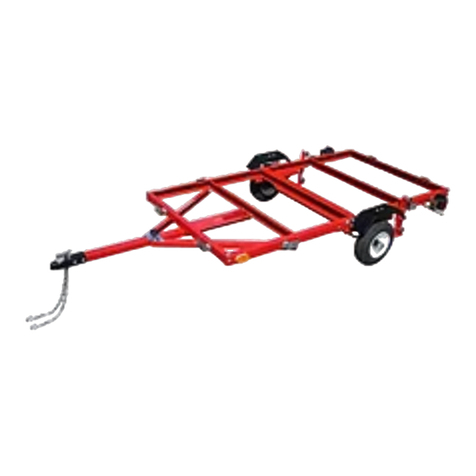
Long Chih Industries
Long Chih Industries LCI-851T owner's manual

PRONAR
PRONAR T672ECO user manual

Fort
Fort ALIEN HY 6.5 Use and maintenance instructions

Clam Corp
Clam Corp Polar HD 1200 Specification sheet

HAUL MASTER
HAUL MASTER 62253 owner's manual

Century
Century 974W25 Installation, operation, maintenance, parts

Humbaur
Humbaur Startrailer Plus Series Operating instructions manual
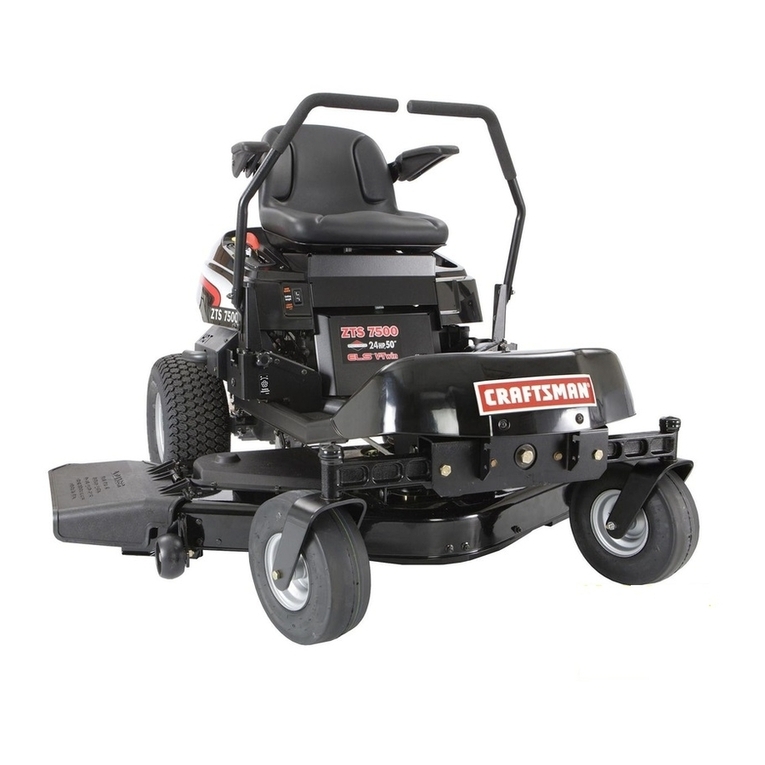
Craftsman
Craftsman ZTS 7500 Operator's manual

GEM
GEM eM 1400 owner's manual
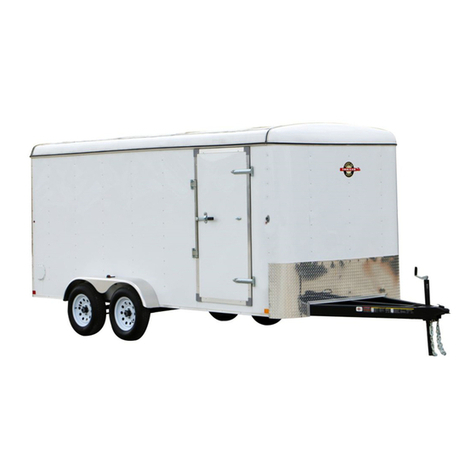
Carry-On Trailer Corporation
Carry-On Trailer Corporation 7x16CG User's manual - safety guide
Textron Specialized Vehicles
Textron Specialized Vehicles TRACKER LX6 EFI Repair and service manual
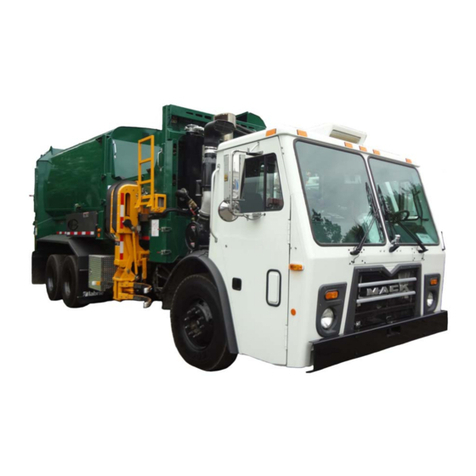
Labrie
Labrie AUTOMIZER FULL EJECT Maintenance manual
